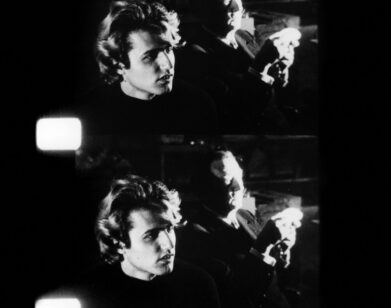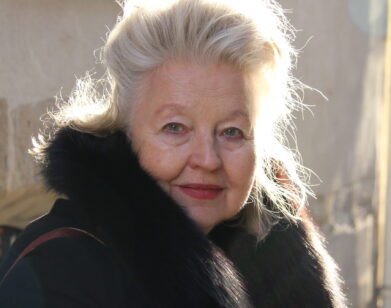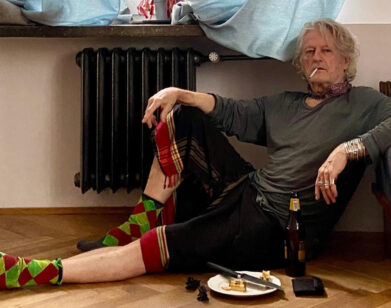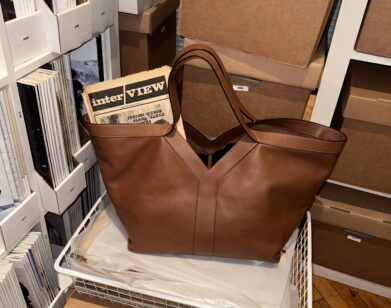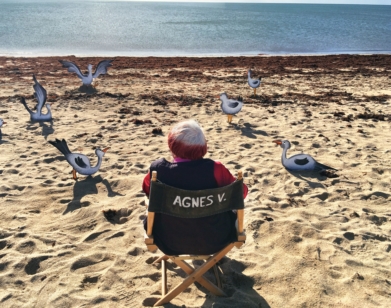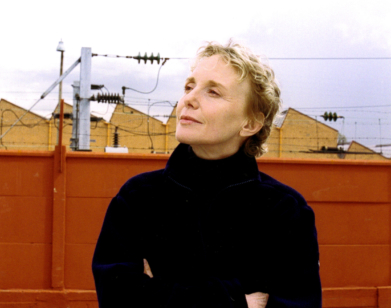The life and times of international treasure Agnès Varda
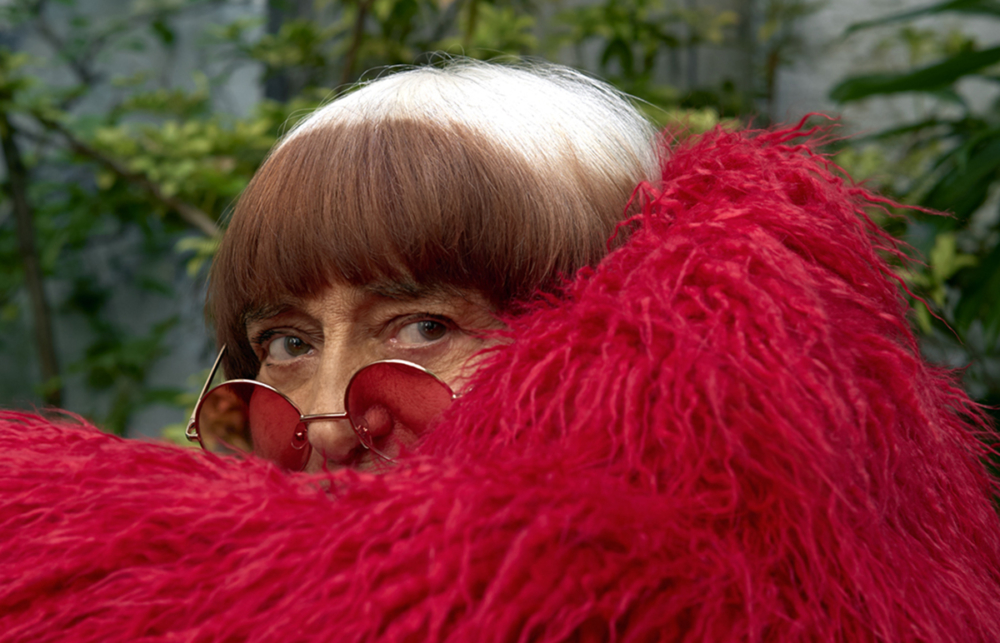

Agnès Varda’s career has spanned decades, continents, and mediums. When the 90-year-old, Paris-based Belgian artist and director sensed a widespread cultural preoccupation with cancer in the early ’60s, she directed Cléo from 5 to 7 (1962), a real-time film about a woman awaiting diagnosis results that cemented Varda’s role as a foundational member of the French New Wave. In 1968, when she arrived in California with her husband and fellow director Jacques Demy, she spent her brief time in the United States chronicling an outpouring of radicalism, both in documentary—with Black Panthers (1968)—and in feature film—Lions Love (…and Lies), in 1969. A still from the latter work—a Pablo Picasso–inspired composition with Varda at its center—was chosen by Andy Warhol to be the inaugural cover of this magazine. Forty-eight years and almost as many films later, Varda returned to Los Angeles in 2017 to receive an Honorary Academy Award (and do an instantly iconic dosey-doe in Gucci pajamas with Angelina Jolie).
When the curator Hans Ulrich Obrist invited her to participate in the 2003 Venice Biennale, Varda, always prescient, had already begun creating the heart-shaped potatoes that would comprise her first public installation. They have been close friends ever since, and on a bright afternoon in July, they convened in the Parisian courtyard where Varda wrote her very first film.
———
HANS ULRICH OBRIST: You were on the first-ever cover of Interview magazine. How did that come about?
AGNÈS VARDA: Like everybody, I wanted to meet Andy Warhol. I was impressed by his work and how daring he was. I think he changed the cinema completely, simply by opening his camera and letting it go. He dealt differently with time and duration, and he didn’t care about how people would perceive it. It changed the cinema for me. It doesn’t mean that I loved to watch his films—because eight hours is boring—but the concept was revolutionary.
OBRIST: When did you first meet Warhol?
VARDA: We met here and there in New York, at some underground film screenings. In 1967, he invited Jacques and me to visit him at his Factory. A lot of people were there—Nico, the young men acting in his films, beautiful women like his muse Viva. When I was preparing Lions Love (…and Lies), I had in mind to cast Viva, so I went to the Factory to ask Andy to convince her. Andy was nice to me and said to Viva, “This is Agnès. You should work with her. She made a film called Cléo from 5 to 7. It’s a beautiful film.” I loved that. Then he added, “If I had made this film, we would have shot from five to seven.” Andy cared about Viva, and that’s why they decided to make the cover. That cover image is interesting, because the way the three characters are positioned is a total copy of a Picasso drawing.
OBRIST: Was Picasso an inspiration for you?
VARDA: I’m not sure I would call him an inspiration, but I was fascinated by his capacity for invention. The way he changed all the time gave me lots of strength.
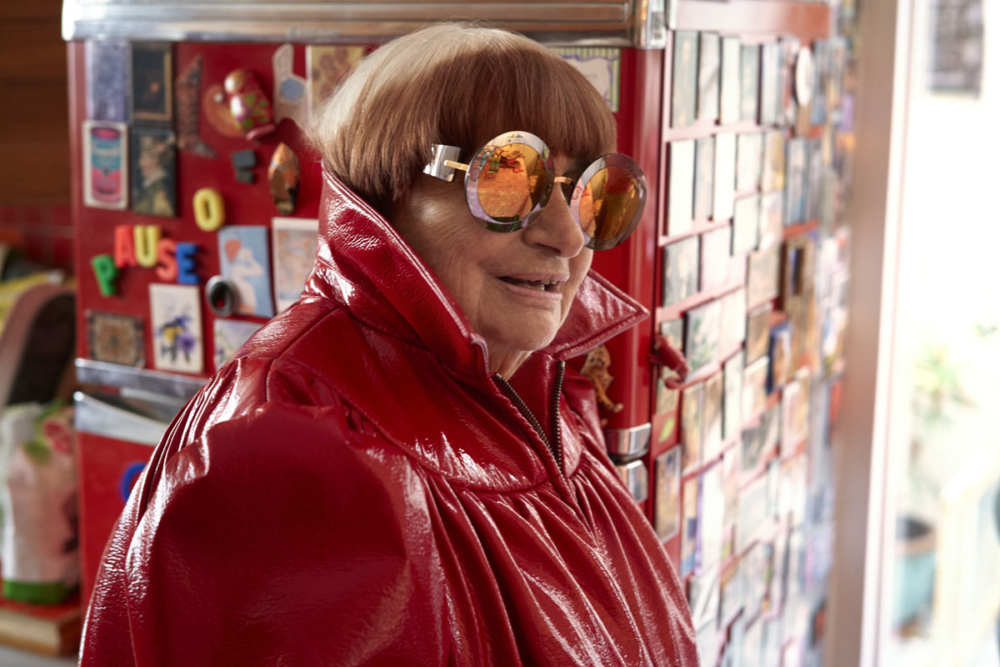
Coat by Miu Miu. Sunglasses by Retrosuperfuture
OBRIST: In your original Interview story about the making of Lions Love (…and Lies), you talk about Hollywood as a space of freedom. What did you mean by that?
VARDA: The way I worked there was total freedom, given to me by Max Raab, who produced the film. Carlos Clarens, who helped me write the screenplay, said that Hollywood, at its birth, was “an orange grove with breakfast served by the Ritz.” My film is about three characters who want to be Hollywood stars, but they don’t want to play the game. They want to remain naked all the time, have a good time, and say what they want to say. That time was all about sex and politics. The film was happening in June 1968, and the three of them are in bed when they find out about the [Robert] Kennedy assassination. In the screenplay, the day after, Viva learns of the shooting of Andy Warhol, which also happened that week. The TV stations didn’t mention the shooting of Andy Warhol, but the death of Kennedy was commented on nonstop. In the days following Kennedy’s assassination, they took his corpse on a train from Los Angeles to New York to go to St. Patrick’s Cathedral. His corpse’s trip was on TV for days. I remember seeing a woman ironing her laundry while watching the train with Kennedy’s dead body pass by her window. I wanted that to be a part of the film. Three stars plus a TV set.
OBRIST: Where did the title Lions Love (…and Lies) come from?
VARDA: Lions, because of the actors’ hair. Love, because it is a love threesome. And lies, because it’s about the news and Hollywood. On our set, everything was half-fake: Real flowers, fake flowers. Real columns, fake columns. Secrets and lies. And that’s because Hollywood is fake—but true at the same time.
OBRIST: You and Jacques first moved to Hollywood in the late ’60s. What are your memories of that arrival?
VARDA: I remember telling Jacques, “I’ll go with you to America, but if I don’t like it, I’m coming back.” I wasn’t attracted to American cinema, but I fell in love with Los Angeles the minute I arrived. We rented a little house and two white convertibles. In those days, when Jacques was starting to work with Columbia [Pictures] on Model Shop, I loved driving slowly down these endless boulevards. I got very excited not only by the Los Angeles landscape but by that generation. It was a lot of peace and love, hippies, huge Sunday meetings in the parks. The Doors, Buffalo Springfield, and the Mamas & the Papas would come over and play for free.
OBRIST: Were you not in Paris during the protests of May 1968?
VARDA: No, I was in America with the Black Panthers
OBRIST: How did that film, Black Panthers, come about?
VARDA: I was friendly at the time with [the film producer] Tom Luddy, who told me about the marchers in Oakland and about Huey P. Newton, one of the leaders of the Black Panthers, who was in jail. I would take a plane there every Sunday, and I filmed all of them—Eldridge Cleaver, Bobby Seale. I was sometimes alone with my camera, sometimes helped. I would smile and say, “French television,” and they would just let me film. I felt it was important to capture that time when they were fully empowered. A couple years later their movement was all in pieces.
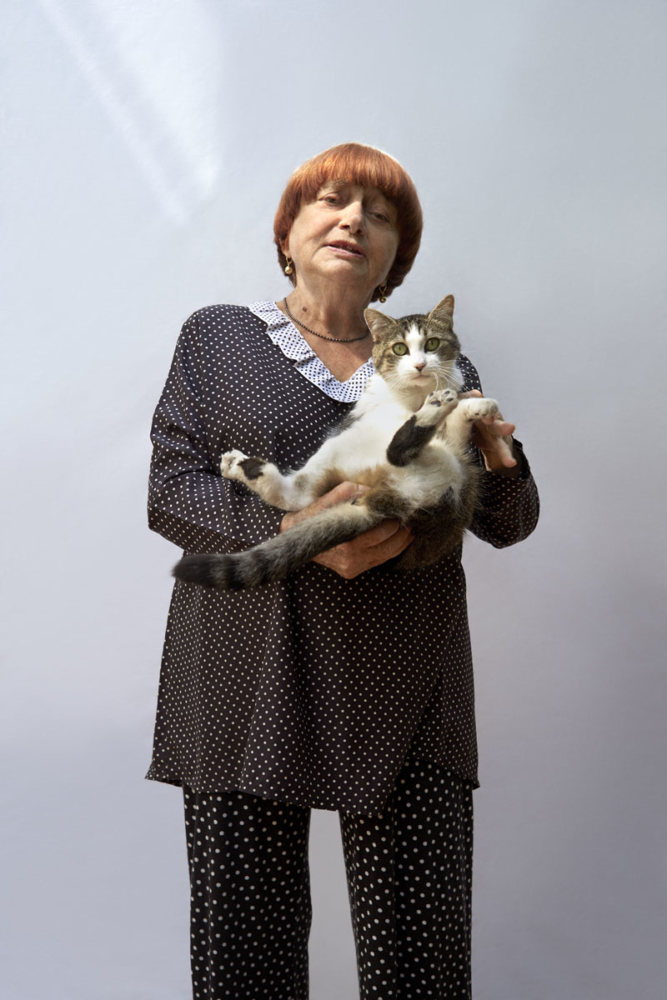
Top, Pants, Jewelry, and Cat Agnès’s own
OBRIST: How did it feel to be in California for that moment in time, and then to return almost 50 years later to receive an honorary Oscar?
VARDA: It was the surprise of my life. Those honorary Oscars are given to filmmakers and artists who they respect and admire, but who were never mainstream. I was delighted, of course. The room was filled with all these stars, and here I was with my family. In my head I was dancing, and then it really happened. Angelina Jolie gave me the statue, took me by the arm, and we improvised a little dance.
OBRIST: You’re busier now more than ever. What is the secret that has allowed you to stay creatively active for nearly seven decades?
VARDA: I’m curious. Period. I find everything interesting. Real life. Fake life. Objects. Flowers. Cats. But mostly people. If you keep your eyes open and your mind open, everything can be interesting. The secret is that there is no secret.
OBRIST: How have you allowed yourself to follow these curiosities?
VARDA: What I notice or discover has to grow in my mind. I always wait until the ideas and impulses are so strong that they invade my mind and I have to pursue them. My mind is often half-sleeping, like in a daydream. Then some images come together, some ideas, and then suddenly I have to do it. Like with Cléo from 5 to 7—at the time, there was this collective fear of cancer. People spoke about cancer a lot. The subject of a woman expecting the results of a cancer test felt interesting, and so I decided to do it in real time, with real geography.
“If you keep your eyes open and your mind open, everything can be interesting. The secret is that there is no secret.”—Agnes Varda
OBRIST: How did you feel about being called “The Grandmother of the French New Wave,” when you were just 30 years old?
VARDA: That was related to my first film, La Pointe Courte, which I made in 1954, five years before the blooming of [Jean-Luc] Godard and [François] Truffaut. I used to be the Grandmother of the New Wave, but now I am the Dinosaur of the New Wave. Only Godard and I are left alive.
OBRIST: The Nouvelle Vague was dominated by men. Is that what prompted you to make a film like One Sings, the Other Doesn’t?
VARDA: No, there was no connection between the New Wave and my feminist musical film from 1976. Since 1973, I had written a few screenplays on feminist subjects, but nobody wanted them. So in 1976, I produced One Sings, the Other Doesn’t, about 15 years of struggle as experienced by two women. You know, women used to be put in prison when they had abortions. The last woman to be executed by guillotine in France had been an abortionist. It’s a terrible story, isn’t it? There was a famous manifesto signed by 343 women who proclaimed, “We’ve Aborted.”
OBRIST: Did you sign it?
VARDA: Yes. So did Françoise Sagan, Catherine Deneuve, Delphine Seyrig, Colette Audry, and many more. There were trials. Young women were being put in prison. The manifesto said that this was clearly an injustice. The law was striking down on us. Charlie Hebdo and Minute were calling it the Manifeste des 343 Salopes [“Manifesto of the 343 Bitches”]. There was such contempt toward women’s desire to be free.
OBRIST: Your work has spanned the worlds of film and contemporary art. You and I first came into dialogue during a project for the 2003 Venice Biennale called Utopia Stations, in which Molly Nesbit, Rirkrit Tiravanija, and I asked 120 artists and groups to create small, autonomous structures. We called you hoping that we could somehow convince you to be a part of it.
VARDA: That was one of those calls where you’re ready before the phone even rings. I had already been filming and photographing the heart-shaped potatoes that would appear in that project, “Patatutopia.” And then here arrives this strange news that Hans Ulrich Obrist wants me to join all of these very famous artists in this exciting exhibition.
OBRIST: That was your first installation.
VARDA: The first of many. I started to build actual shacks from composite prints of my own films.
OBRIST: Lions Love (…and Lies) became the basis for one of your shack installations at LACMA in 2013.
VARDA: To tell you the truth, my first real exhibition was in this very courtyard in 1954. I had no idea I could sell pictures. I thought I could just invite my neighbors, and they all came. This courtyard has always been a base for me. I wrote my first film, La Pointe Courte, in 1954 on a table like this one. I just celebrated my 90th birthday, and I often think, “My God, look at all of these waves of work!” It’s not just about memories, because thankfully I’ve forgotten many things.
OBRIST: How did you celebrate your 90th birthday?
VARDA: I swam in the ocean.
———
Styled by Mel Ottenberg
Hair: Rudi Lewis at LGA Management
Makeup: Stéphane Marais at Studio 57
Set Design: Alexander Bock at Streeters London
Production: Brachfeld Paris
Digital Technician: Stefano Poli
Lighting Design: Christian Bragg
Fashion Assistants: Mathilde Labuthie, Louis Portejoie
Tailor: Mikolaj Sokolowski at Atelier on Set
Manicure: Julie Villanova at ArtList Paris
Lighting Assistants: Margaux Jouanneau and Justine Paquette
Post-Production: Two Three Two

